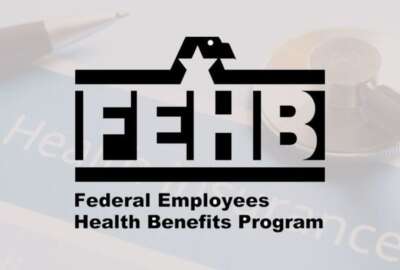Hubbard Radio Washington DC, LLC. All rights reserved. This website is not intended for users located within the European Economic Area.
On Air: Federal News Network
Trending:
Top 3 Tips for Open Season
Open Season, the time when federal employees and retirees can comb through more than 250 plans of the Federal Employees Health Benefits (FEHB) Program and make ...
Today’s the day: Open Season, the time when federal employees and retirees can comb through more than 250 health insurance plans on the Federal Employees Health Benefits (FEHB) Program to choose or change coverage, kicks off today.
It runs through Dec. 9.
“The federal government 50 years ago made a wise decision … to allow federal employees not just a choice of one plan, like traditionally large employers do — the HR people pick the plan, everybody has to take it or leave it — but to offer a wide choice of plans,” said Walt Francis, health insurance expert and author of “Consumers’ Checkbook Guide to Health Plans for Federal Employees,” in a recent interview on FEDTalk.
Despite the wide array of choices — or maybe because of it — only about 5 percent of federal employees actually change plans during Open Season.
But doing so could save you real money, according to the experts.
“There are lots of federal employees who could save $2,000 or more next year,” Francis said. “Think about this — we’re in, what, the third year without a raise? How about giving yourself a $2,000 pay raise by making a wise plan-choice decision.”
Below, find some key pieces of information for the current Open Season and links to more information.
1 |
What’s new this year?
The two main Blue Cross Blue Shield plans contain more than half the total FEHB participant enrollment, Francis said. Nevertheless, there are a plethora of other plans competing for business, and the Office of Personnel Management, which manages the FEHB program and the Open Season period, is constantly on the hunt to add new plans.
“OPM works hard to try to bring in new plans,” in part to to increase competition and offer enrollees more coverage options, Francis said.
New this year are four plans, all of them health-maintenance organizations (HMOs).
- Humana Health Benefit Plan of Louisiana, Inc. (available in parts of Louisiana);
- Total Health Care USA, Inc. (available in parts of Michigan);
- Scott & White Health Plan (available in Texas);
- HealthKeepers, Inc. (available in parts of Virginia including Fairfax, Loudoun and Prince William counties).
| Top 3 Open Season Tips
Tammy Flanagan 1. Look at your 2014 plan brochure to see what is changing for 2014. 2. Use one or more of the Plan Information resources that are available to help you evaluate and select a health plan for 2014. 3. Don’t forget about your other valuable federal benefits that are also available including FSAFEDS, FEDVIP, and FLTCIP. |
In addition, the National Association of Letter Carriers is offering two new plans: a Consumer Driven Health Plan and a Value Option. NALC will also continue offering its High Option Plan.
OPM has also added four new carriers to the Federal Employee Dental and Vision Insurance Program, including three new dental plans and an additional vision plan.
FEP Blue Dental, Delta Dental and Dominion Dental have been added to the roster of dental carriers and Aetna has been added to the vision options.
Employees can check Benefeds.com to compare FEDVIP plans.
Tammy Flanagan, senior benefits director at the National Institute of Transition Planning, said the biggest trend she’s seeing among plans for 2014 is increasing interest in high-deductible and consumer-driven plans.
“The high deductible plans allow employees and retirees to set up health care savings accounts that provide tax incentives in the form of tax-free contributions that roll over from one year to the next and premium rebates into these accounts that can be used to meet the deductible and pay medical out of pocket expenses,” she said.
The high-deductible plans are becoming increasingly popular with mid-career and pre-retirement employees, Flanagan said.
2 |
How much are premiums going up?
Employees can expect to pay an average of 4.4 percent more in premiums next year.
OPM announced last month the total combined cost of premiums was going up an average of 3.7 percent, but that includes the increase in how much the government will contribute to premiums — the government picks up about 75 percent of the cost of insurance premiums.
Premiums will vary across individual plans.
Premiums for some of the more expensive plans, such as MHBP Standard Option (which used to be called the Mailhandlers Benefit Plan) and the Rural Carrier Benefit Plan, are actually going down slightly but are still more expensive than Blue Cross Blue Shield, Flanagan said.
Enrollees in the SAMBA High Option will see a hefty hike in premiums — up to more than $275 a month for self-only and more than $703 a month for family coverage. But premiums for the more popular SAMBA Standard Option Plan remain locked in at this year’s levels.
Why the big increase?
| Top 3 Open Season Tips
Ed Zurndorfer 1. When choosing a Federal Employees Health Benefits Program (FEHBP) health insurance plan for 2014, do not focus solely on premium cost. 2. Realize that no FEHBP plan pays for everything and employees will have to pay something out-of-pocket. 3. Before enrolling in a separate dental or vision insurance plan offered through the Federal Employees Dental and Vision Insurance Program (FEDVIP), find out if their FEHBP plan offers dental and vision benefits that meets their needs. |
“The high option SAMBA plan has quite a few enrollees who retired from federal service many years ago before Medicare was available to federal employees and this is most likely what caused the big increase for these older retirees,” Flanagan said. If you have loved ones who might be in their later years … switching to the standard option or one of the other fee-for-service plans could save them hundreds of dollars in premium costs next year”
Many of the HMOs will also see sizable premium increases, including Aetna Whole Health and CareFirst BlueChoice, Kaiser High Option, all HMOs.
But experts say one of the biggest pieces of advice is don’t only look at the premiums.
Ed Zurndorfer, registered employee benefits consultant, said that employees should consider a host of other factors, including total coverage, access to doctors and hospitals, as well as plan limitations.
“Realize that no FEHBP plan pays for everything and employees will have to pay something out-of-pocket,” Zurndorfer said.
3 |
Where can I turn for more information?
OPM has published an exhaustive guide to 2014 federal benefits. The guide includes details and cost breakdowns on each of the FEHBP and FEDVIP plans as well as the results of satisfaction surveys with the plans.
The Consumers’ Checkbook Guide to Federal Health Plans is considered the Bible of FEHBP. Online access to the guide is $9.95, although many agencies provide free access to their employees.
Walt Francis, the key author of the guide, will be a guest on the “For Your Benefit” radio program Monday at 10 a.m. as well as Senior Correspondent Mike Causey’s “Your Turn” program Wednesday at 10 a.m.
Rep. Chris Van Hollen (D-Md.), in conjunction with the Maryland Federation of the National Active and Retired Federal Employees Association, will host three seminars in November on health benefits to aid federal employee constituents during Open Season. Click here for more information.
Causey: How to choose a dental plan during Open Season
OPM in talks to add 6 new carriers to FEHBP
New bill could curtail FEHBP prescription drug costs
Copyright © 2024 Federal News Network. All rights reserved. This website is not intended for users located within the European Economic Area.




